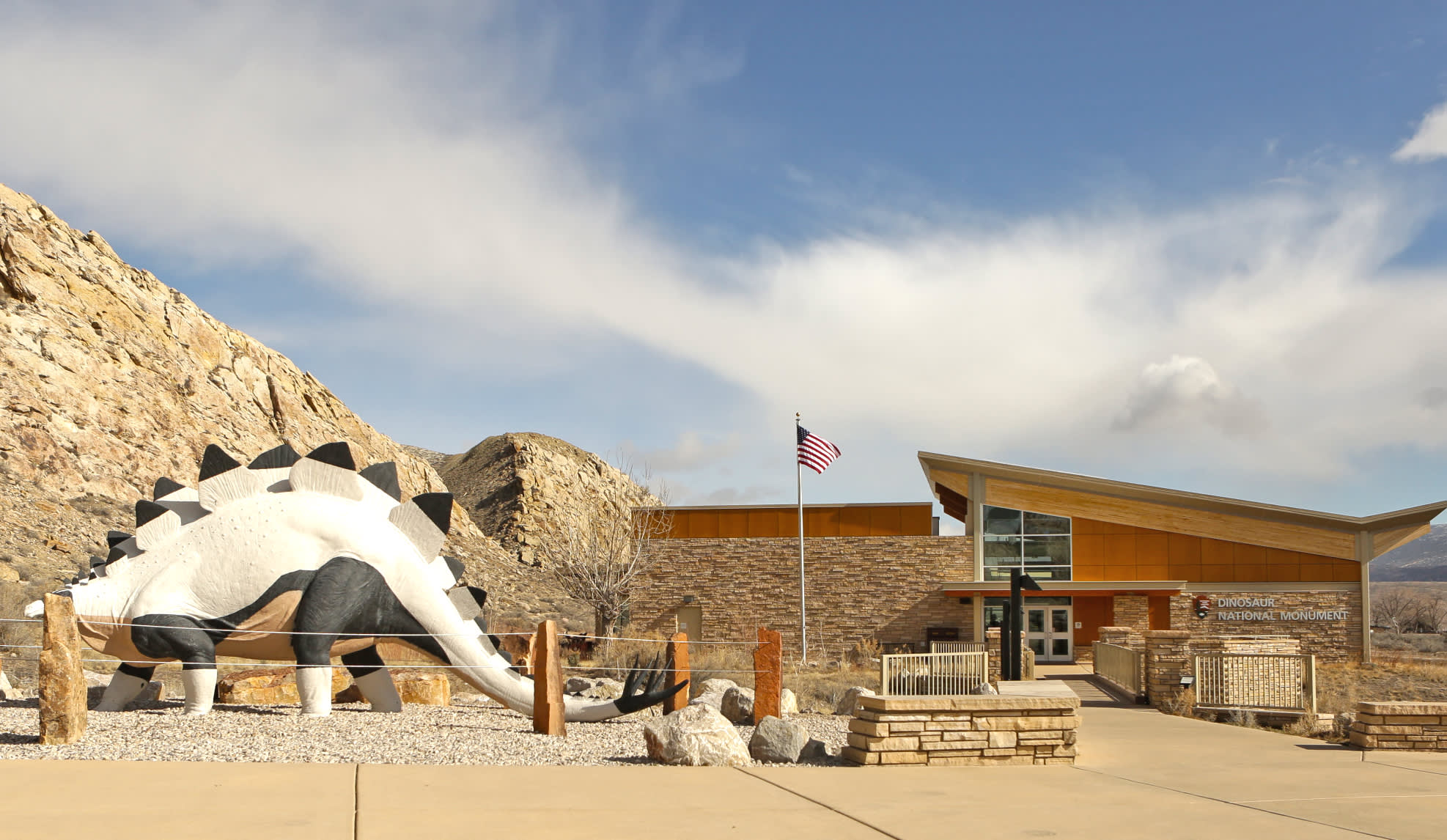
Top 5 Prehistoric Adventures
The original Utahns weren’t nearly as willing to bring you a casserole, but who wants to look at fossilized Relief Society presidents?
Utah’s sedimentary sandstone provided a fantastic final resting place for thousands of our Mesozoic predecessors. Here are the five best places to glimpse the state’s prehistory, dinosaur and otherwise.
Dinosaur National Monument
Dinosaur National Monument
In 1909, paleontologist Earl Douglass was searching for fossils for the Carnegie Museum when he discovered one of the world’s best windows into the late Jurassic. It’s grown to 200,000 acres in the hundred years since it was designated a national monument (happy anniversary!) but the highlight is still the hundreds of bones concentrated on the Dinosaur Wall.
Utah Field House of Natural History Museum
Twenty minutes away in Vernal, see these massive monsters reconstructed. Educational displays actually add to T-Rex & friends’ visceral appeal. This is the spot for anyone who was ever a kid.
Cleveland-Lloyd Dinosaur Quarry
Cleveland Lloyd Dinosaur Quarry
More than 15,000 individual bones AND ONE DINOSAUR EGG (not viable, for the record) have come from this working quarry so far, the densest Jurassic dinosaur fossil bed ever discovered. Though the bones are/were in a disarticulated state, it’s likely that many complete skeletons have been recovered. Scientists are still debating how at least 73 dinosaurs -- many of them predators -- met their end so close together.
Mill Canyon/Copper Ridge
In the Jurassic period, the area around Arches was much wetter. The swamps, bogs and lakes created a rich tapestry of ancient plant and animal life as they turned into layers of desert. The Mill Canyon Dinosaur Trail is unfenced and unmonitored. Try not to ruin something that survived 150 million years before you.
St. George Dinosaur Discovery Site
Johnson Farm holds some of the oldest and best-preserved dinosaur tracks in the world, only discovered in February of 2000. Come see brand new ancient history.
Travel Tip: Pack a few jokes to impress the paleontologists on your trip:
- What do you call a terrible, horrible, unpleasant dinosaur?
A thesaurus
- What did orthodox Jewish dinosaurs avoid?
Jurassic pork
- Why don’t dinosaurs talk?
Ask Brian Regan’s son
- What did the paleontologist say when a third-year Ph.D. asked her if she would be able to excavate allosaurus bones from the calcareous smectitic mudstone?
“I dino-might.”